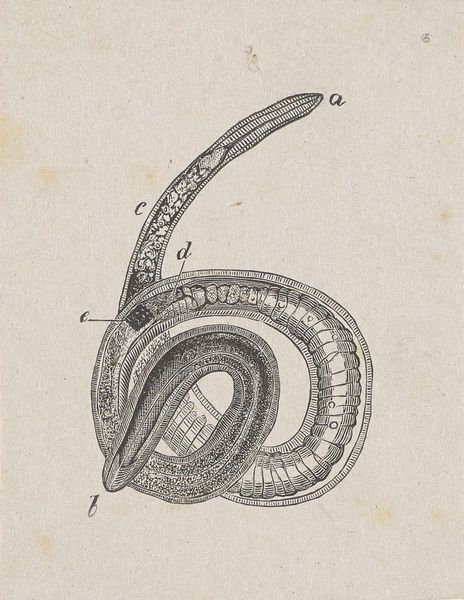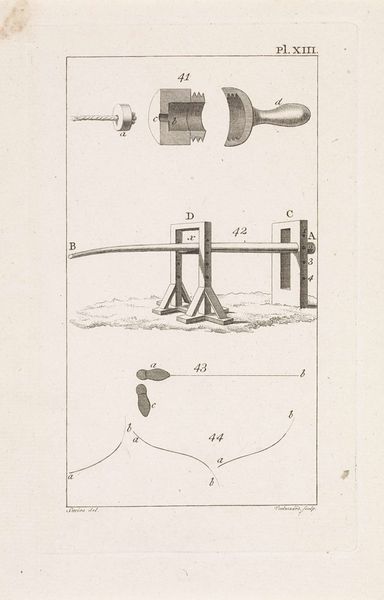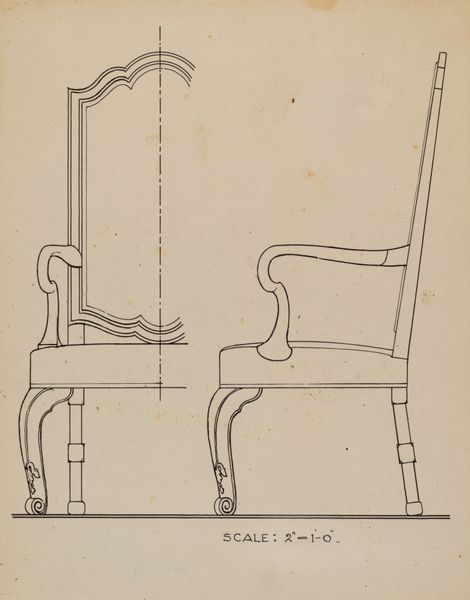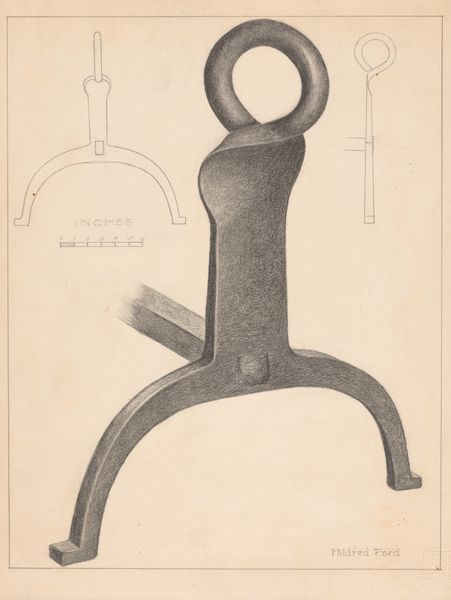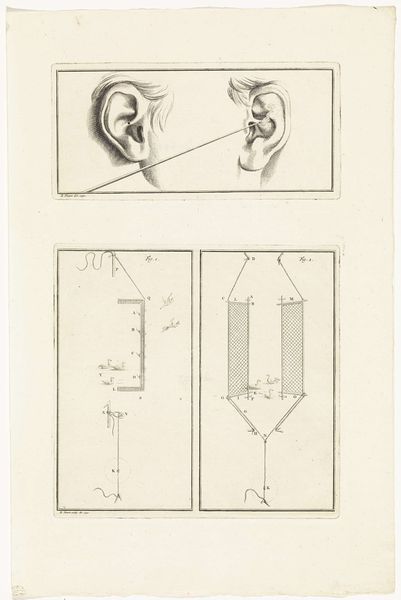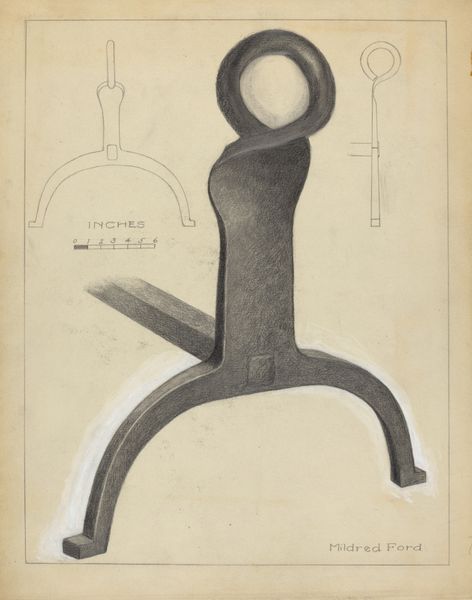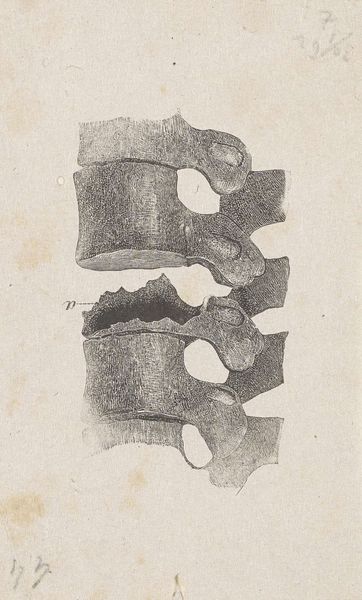
drawing, graphite
#
drawing
#
aged paper
#
toned paper
#
light pencil work
#
shading to add clarity
#
old engraving style
#
personal sketchbook
#
geometric
#
ink colored
#
line
#
graphite
#
sketchbook drawing
#
shading experimentation
#
colour shading
Dimensions: height 118 mm, width 71 mm
Copyright: Rijks Museum: Open Domain
Curator: This intriguing drawing from the Rijksmuseum's collection is titled "Elektromagneet," or "Electromagnet" and dates from between 1836 and 1912. Isaac Weissenbruch, the artist, rendered it in graphite and ink. Editor: It gives a stark, almost blueprint-like impression, but also suggests a deep dive into understanding how things work. The neutral tones make it seem like it comes from another era. There's an objective, unemotional feel about it. Curator: Yes, the style speaks to its time. It comes from a period of burgeoning scientific interest, doesn't it? These instructional or explanatory diagrams had a unique cultural resonance then; they reflected the optimism and curiosity of the public towards the rise of scientific thought and discovery. Editor: Absolutely, and what about its social dimensions? Thinking of access to knowledge – who was the intended audience? Was this purely scientific, or were there efforts to demystify this knowledge for wider circles, including possibly new entrepreneurial audiences? Curator: That’s an important point. Technical drawings often served multiple roles. Beyond the scientific community, this sort of rendering could appear in publications aimed at a newly literate working class, eager to understand the mechanics of the industrial age, offering a chance to move upwards in life. Editor: It definitely looks like the kind of image used in didactic efforts for scientific education and empowerment, yet also in a capitalist framework for the promotion of innovative technologies that would potentially reshape socioeconomic class systems and labour. Curator: Precisely. Also note Weissenbruch's careful rendering. The shading is not just functional, it's aesthetic too, giving volume and presence to the machine. It represents scientific objectivity married with the artistry of representation. Editor: A marriage of knowledge and control – both understanding and mastering a force, perhaps reflecting deeper ambitions of humanity during the Industrial Revolution? I find the limited shading especially compelling as well. It guides our eyes while preserving that sense of a straightforward mechanical drawing. Curator: Yes, it highlights a moment when scientific progress was seen as universally beneficial, promising a better future for all through technology and industry. Editor: It's a useful reminder that we should never underestimate the power that even seemingly technical or impartial images can hold to convey subtle assumptions about who benefits from innovation, who holds that power, and at whose expense progress often comes. Curator: I agree; reflecting on it reveals complexities we might otherwise miss. Editor: Indeed, it shows how an artwork, even one as seemingly objective as a technical drawing, can be rich for critical dialogue and open engagement.
Comments
No comments
Be the first to comment and join the conversation on the ultimate creative platform.
